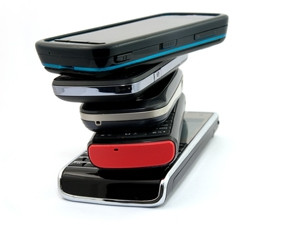
Feature phones in the Middle East and Africa will make up 27% of the region's mobile market by the end of 2019, reveals research from the International Data Corporation (IDC).
The technology consulting firm has released its Q1 2015 Mobile Phone Tracker report, which reveals the feature phone market in the region declined by 20% year-on-year.
The report, however, does not reveal the number of feature phone units shipped during this period.
According to the IDC, the decline of feature phones in the MEA region can be attributed to the rise of the low-priced smartphone. In Africa, 45.1% of smartphones shipped cost less than $100, while 75% of the devices were priced below $200, says the report.
In 2015, smartphone shipments in MEA will reach 155 million units, according to IDC predictions.
"This price bracket seems to be the sweet point for most vendors launching in the region, as well as for established vendors looking to increase their shares by targeting the lower end of the market," says Nabila Popal, research manager for IDC's Mobile Phone Tracker in the Middle East, Africa, and Turkey.
Popal adds: "This has resulted in phones priced under $200 accounting for about 36% of the Middle East smartphone market, while at the other end of the spectrum, the $450+ price band has seen its share fall from 25% in Africa and 48% in the Middle East a year ago, to 14% and 34% today."
According to analyst and Strategy Worx CEO Steven Ambrose, the decline in the number of feature phones in the region is driven by the cost of manufacture.
"It is now less expensive to make a smartphone than a feature phone. The exception is dumb phones that make calls and send SMSes and still remain the lowest cost devices. The $50 smartphone and below has killed the feature phone market."
The sub-$100 smartphone has most definitely had a massive impact, mostly on the Android and now Firefox OS space, Ambrose notes.
The IDC report further highlights that smartphones accounted for 47% of shipments in Africa, while 63% of devices were shipped in the Middle East. More than 36 million smartphone units were shipped during the first quarter in MEA.
For the African region, Nigeria and SA were identified as the main contributors to overall growth for the continent, with year-on-year growth of 135% and 56% respectively.
During the quarter, smartphone shipments in Nigeria accounted for 14% and SA was responsible for 12% of shipments.
ICT expert Adrian Schofield says as quality and coverage of networks improve, more people will move towards better devices.
"Twenty-seven percent is still a significant percentage of the market and reflects the case of price as well as the quality of the devices," he says.
Schofield notes price is always an issue and will play a significant role in the adoption of smartphones in the region. For feature phones priced at R150 to R200, there will always be a market, he says.
According to Schofield, more than a quarter of users will not be able to take full advantage of the growing smartphone market because some don't want smartphone features and still prefer to just SMS, or make voice calls.
"The 27% is not the final ticking point for people giving up on feature phones," he notes.
Ambrose comments: "The feature phone will remain in many hundreds of millions in use in the African market for many more years as these phones continue to operate satisfactorily for most users."
Share